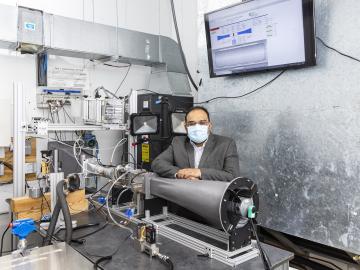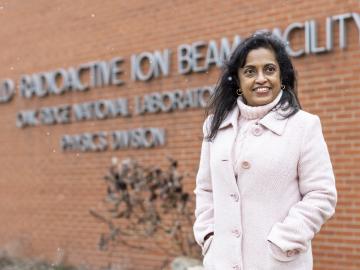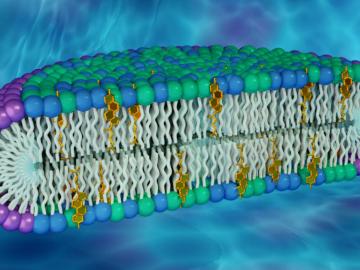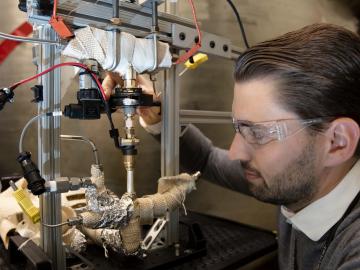
Filter News
Area of Research
News Type
News Topics
- (-) Advanced Reactors (13)
- (-) Biotechnology (26)
- (-) Buildings (35)
- (-) Clean Water (17)
- (-) Cybersecurity (14)
- (-) Nanotechnology (21)
- (-) Neutron Science (85)
- (-) Physics (39)
- (-) Quantum Science (49)
- 3-D Printing/Advanced Manufacturing (60)
- Artificial Intelligence (79)
- Big Data (50)
- Bioenergy (70)
- Biology (82)
- Biomedical (44)
- Chemical Sciences (37)
- Composites (12)
- Computer Science (117)
- Coronavirus (20)
- Critical Materials (6)
- Education (2)
- Emergency (3)
- Energy Storage (37)
- Environment (124)
- Exascale Computing (51)
- Fossil Energy (6)
- Frontier (45)
- Fusion (40)
- Grid (34)
- High-Performance Computing (82)
- Hydropower (6)
- Isotopes (35)
- ITER (4)
- Machine Learning (40)
- Materials (53)
- Materials Science (64)
- Mathematics (9)
- Mercury (7)
- Microelectronics (3)
- Microscopy (27)
- Molten Salt (2)
- National Security (63)
- Nuclear Energy (71)
- Partnerships (36)
- Polymers (12)
- Quantum Computing (35)
- Security (18)
- Simulation (44)
- Software (1)
- Space Exploration (13)
- Statistics (2)
- Summit (40)
- Transportation (35)
Media Contacts

At the Department of Energy’s Oak Ridge National Laboratory, scientists use artificial intelligence, or AI, to accelerate the discovery and development of materials for energy and information technologies.

From Denmark to Japan, the UK, France, and Sweden, physicist Ken Andersen has worked at neutron sources around the world. With significant contributions to neutron scattering and the scientific community, he’s now serving in his most important role yet.

Through a consortium of Department of Energy national laboratories, ORNL scientists are applying their expertise to provide solutions that enable the commercialization of emission-free hydrogen fuel cell technology for heavy-duty

When COVID-19 was declared a pandemic in March 2020, Oak Ridge National Laboratory’s Parans Paranthaman suddenly found himself working from home like millions of others.

When Kashif Nawaz looks at a satellite map of the U.S., he sees millions of buildings that could hold a potential solution for the capture of carbon dioxide, a plentiful gas that can be harmful when excessive amounts are released into the atmosphere, raising the Earth’s temperature.

Nuclear physicist Caroline Nesaraja of the Department of Energy’s Oak Ridge National Laboratory evaluates nuclear data vital to applied and basic sciences.

Researchers at the Department of Energy’s Oak Ridge National Laboratory and the University of Tennessee are automating the search for new materials to advance solar energy technologies.

A team of researchers at Oak Ridge National Laboratory and Purdue University has taken an important step toward this goal by harnessing the frequency, or color, of light. Such capabilities could contribute to more practical and large-scale quantum networks exponentially more powerful and secure than the classical networks we have today.

Researchers believe that proteins could behave differently in lipid raft environments, compared to non-raft regions in a membrane, but this hypothesis has not been fully evaluated. One reason is that membrane models used to study membrane proteins rarely contain rafts.

For a researcher who started out in mechanical engineering with a focus on engine combustion, Martin Wissink has learned a lot about neutrons on the job


